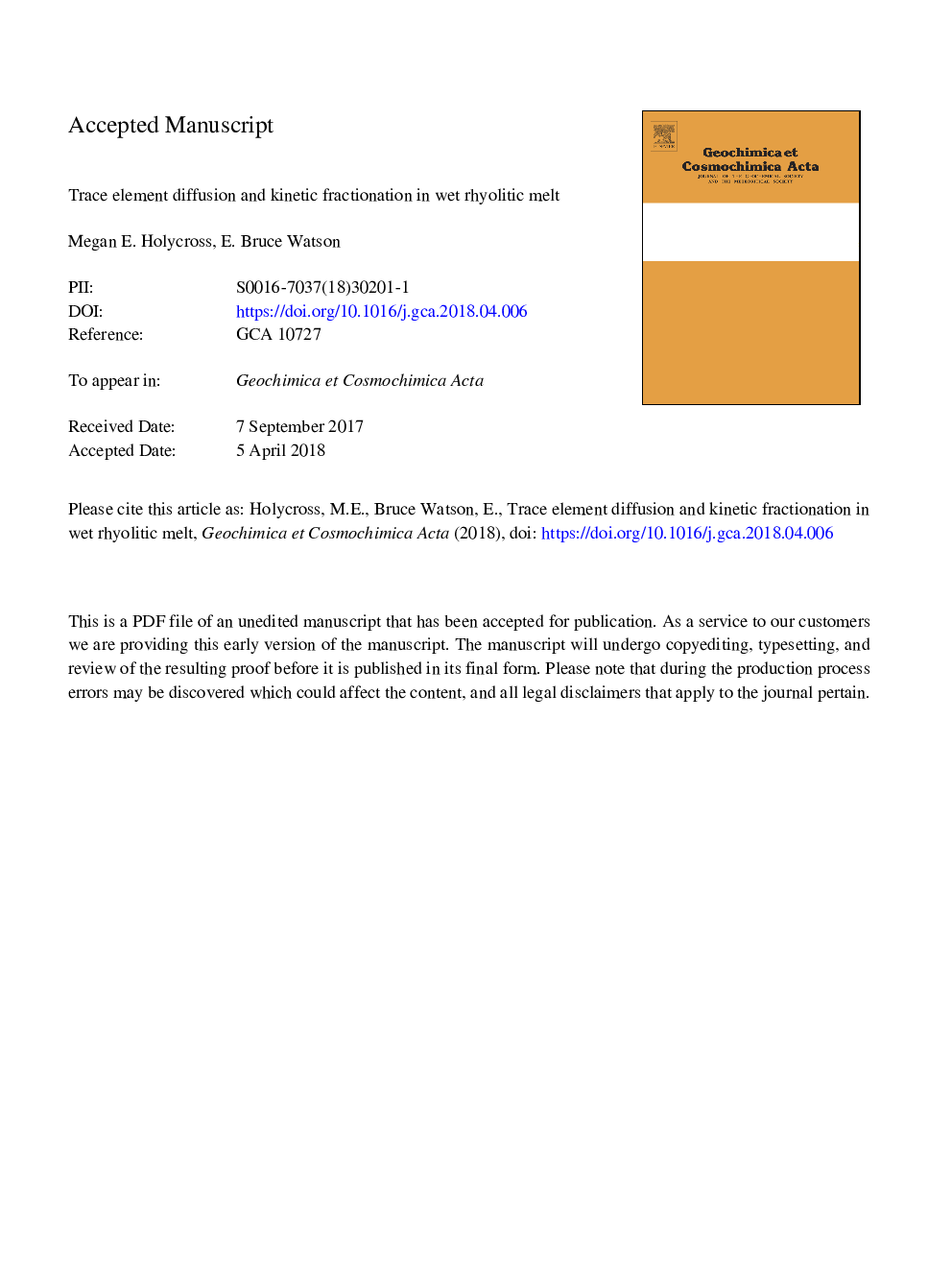| Article ID | Journal | Published Year | Pages | File Type |
|---|---|---|---|---|
| 8910722 | Geochimica et Cosmochimica Acta | 2018 | 47 Pages |
Abstract
Calculated trace element diffusion coefficients cover nearly two orders of magnitude at a given temperature. The high field strength elements are the slowest diffusers, followed by the transition metals and heavy rare earth elements. The light rare earth elements have the fastest diffusion rates in hydrous rhyolitic melt. The measured diffusion coefficients range down to values sufficiently low to preclude diffusive homogenization over geochemically realistic time scales in some cases. The substantial differences in the diffusivities of individual cations may result in fractionated trace element signatures in rhyolite melt pockets. A simple model is used to explore the potential for kinetic fractionation of REE during growth of an apatite crystal in a diffusive boundary layer locally saturated in P2O5. The faster-diffusing light REE are more efficiently transported away from the crystal interface than the slower-moving heavy REE. Diffusion effects will enrich the melt boundary layer in slow-moving HREE relative to the faster LREE. The kinetic fractionation of REE in the melt growth medium will result in a precipitated apatite crystal with a disequilibrium trace element composition.
Related Topics
Physical Sciences and Engineering
Earth and Planetary Sciences
Geochemistry and Petrology
Authors
Megan E. Holycross, E. Bruce Watson,
